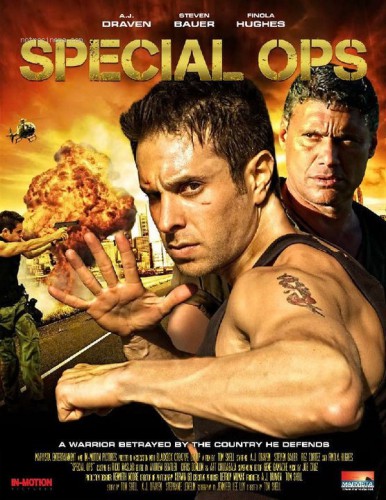Ex: http://www.lewrockwell.com
In the dead of night, they swept in aboard V-22 Osprey tilt-rotor aircraft. Landing in a remote region of one of the most volatile countries on the planet, they raided a village and soon found themselves in a life-or-death firefight. It was the second time in two weeks that elite U.S. Navy SEALs had attempted to rescue American photojournalist Luke Somers. And it was the second time they failed.
On December 6, 2014, approximately 36 of America’s top commandos, heavily armed, operating with intelligence from satellites, drones, and high-tech eavesdropping, outfitted with night vision goggles, and backed up by elite Yemeni troops, went toe-to-toe with about six militants from al-Qaeda in the Arabian Peninsula. When it was over, Somers was dead, along with Pierre Korkie, a South African teacher due to be set free the next day. Eight civilians were also killed by the commandos, according to local reports. Most of the militants escaped.
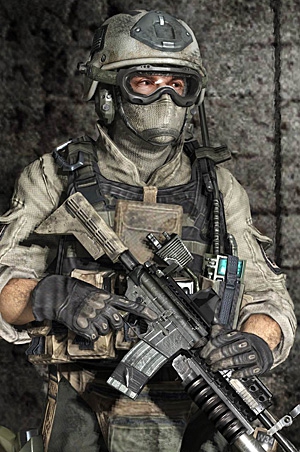 That blood-soaked episode was, depending on your vantage point, an ignominious end to a year that saw U.S. Special Operations forces deployed at near record levels, or an inauspicious beginning to a new year already on track to reach similar heights, if not exceed them.
That blood-soaked episode was, depending on your vantage point, an ignominious end to a year that saw U.S. Special Operations forces deployed at near record levels, or an inauspicious beginning to a new year already on track to reach similar heights, if not exceed them.
During the fiscal year that ended on September 30, 2014, U.S. Special Operations forces (SOF) deployed to 133 countries — roughly 70% of the nations on the planet — according to Lieutenant Colonel Robert Bockholt, a public affairs officer with U.S. Special Operations Command (SOCOM). This capped a three-year span in which the country’s most elite forces were active in more than 150 different countries around the world, conducting missions ranging from kill/capture night raids to training exercises. And this year could be a record-breaker. Only a day before the failed raid that ended Luke Somers life — just 66 days into fiscal 2015 — America’s most elite troops had already set foot in 105 nations, approximately 80% of 2014’s total.
Despite its massive scale and scope, this secret global war across much of the planet is unknown to most Americans. Unlike the December debacle in Yemen, the vast majority of special ops missions remain completely in the shadows, hidden from external oversight or press scrutiny. In fact, aside from modest amounts of information disclosed through highly-selective coverage by military media, official White House leaks, SEALs with something to sell, and a few cherry-picked journalists reporting on cherry-picked opportunities, much of what America’s special operators do is never subjected to meaningful examination, which only increases the chances of unforeseen blowback and catastrophic consequences.
The Golden Age
“The command is at its absolute zenith. And it is indeed a golden age for special operations.” Those were the words of Army General Joseph Votel III, a West Point graduate and Army Ranger, as he assumed command of SOCOM last August.
His rhetoric may have been high-flown, but it wasn’t hyperbole. Since September 11, 2001, U.S. Special Operations forces have grown in every conceivable way, including their numbers, their budget, their clout in Washington, and their place in the country’s popular imagination. The command has, for example, more than doubled its personnel from about 33,000 in 2001 to nearly 70,000 today, including a jump of roughly 8,000 during the three-year tenure of recently retired SOCOM chief Admiral William McRaven.
Those numbers, impressive as they are, don’t give a full sense of the nature of the expansion and growing global reach of America’s most elite forces in these years. For that, a rundown of the acronym-ridden structure of the ever-expanding Special Operations Command is in order. The list may be mind-numbing, but there is no other way to fully grasp its scope.
The lion’s share of SOCOM’s troops are Rangers, Green Berets, and other soldiers from the Army, followed by Air Force air commandos, SEALs, Special Warfare Combatant-Craft Crewmen and support personnel from the Navy, as well as a smaller contingent of Marines. But you only get a sense of the expansiveness of the command when you consider the full range of “sub-unified commands” that these special ops troops are divided among: the self-explanatory SOCAFRICA; SOCEUR, the European contingent; SOCKOR, which is devoted strictly to Korea; SOCPAC, which covers the rest of the Asia-Pacific region; SOCSOUTH, which conducts missions in Central America, South America, and the Caribbean; SOCCENT, the sub-unified command of U.S. Central Command (CENTCOM) in the Middle East; SOCNORTH, which is devoted to “homeland defense”; and the globe-trotting Joint Special Operations Command or JSOC — a clandestine sub-command (formerly headed by McRaven and then Votel) made up of personnel from each service branch, including SEALs, Air Force special tactics airmen, and the Army’s Delta Force, that specializes in tracking and killing suspected terrorists.
And don’t think that’s the end of it, either. As a result of McRaven’s push tocreate “a Global SOF network of like-minded interagency allies and partners,” Special Operations liaison officers, or SOLOs, are now embedded in 14 key U.S. embassies to assist in advising the special forces of various allied nations. Already operating in Australia, Brazil, Canada, Colombia, El Salvador, France, Israel, Italy, Jordan, Kenya, Poland, Peru, Turkey, and the United Kingdom, the SOLO program is poised, according to Votel, to expand to 40 countries by 2019. The command, and especially JSOC, has also forged close ties with the Central Intelligence Agency, the Federal Bureau of Investigation, and the National Security Agency, among others.
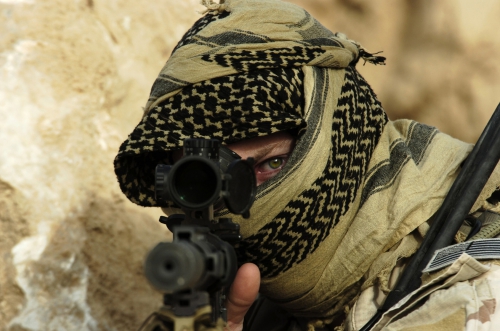
Shadow Ops
Special Operations Command’s global reach extends further still, with smaller, more agile elements operating in the shadows from bases in the United States to remote parts of Southeast Asia, from Middle Eastern outposts to austere African camps. Since 2002, SOCOM has also been authorized to create its own Joint Task Forces, a prerogative normally limited to larger combatant commands like CENTCOM. Take, for instance, Joint Special Operations Task Force-Philippines (JSOTF-P) which, at its peak, had roughly 600 U.S. personnel supporting counterterrorist operations by Filipino allies against insurgent groups like Abu Sayyaf. After more than a decade spent battling that group, its numbers have been diminished, but it continues to be active, while violence in the region remains virtually unaltered.
A phase-out of the task force was actually announced in June 2014. “JSOTF-P will deactivate and the named operation OEF-P [Operation Enduring Freedom-Philippines] will conclude in Fiscal Year 2015,” Votel told the Senate Armed Services Committee the next month. “A smaller number of U.S. military personnel operating as part of a PACOM [U.S. Pacific Command] Augmentation Team will continue to improve the abilities of the PSF [Philippine Special Forces] to conduct their CT [counterterrorism] missions…” Months later, however, Joint Special Operations Task Force-Philippines remained up and running. “JSOTF-P is still active although the number of personnel assigned has been reduced,” Army spokesperson Kari McEwen told reporter Joseph Trevithick of War Is Boring.
Another unit, Special Operations Joint Task Force-Bragg, remained in the shadows for years before its first official mention by the Pentagon in early 2014. Its role, according to SOCOM’s Bockholt, is to “train and equip U.S. service members preparing for deployment to Afghanistan to support Special Operations Joint Task Force-Afghanistan.” That latter force, in turn, spent more than a decade conducting covert or “black” ops “to prevent insurgent activities from threatening the authority and sovereignty of” the Afghan government. This meant night raids and kill/capture missions — often in concert with elite Afghan forces — that led to the deaths of unknown numbers of combatants and civilians. In response to popular outrage against the raids, Afghan President Hamid Karzai largely banned them in 2013.
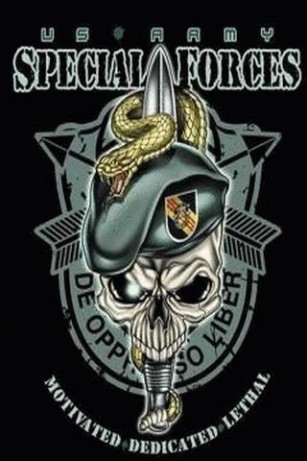 U.S. Special Operations forces were to move into a support role in 2014, letting elite Afghan troops take charge. “We’re trying to let them run the show,” Colonel Patrick Roberson of the Afghanistan task force told USA Today. But according to LaDonna Davis, a spokesperson with the task force, America’s special operators were still leading missions last year. The force refuses to say how many missions were led by Americans or even how many operations its commandos were involved in, though Afghan special operations forces reportedly carried out as many as 150 missions each month in 2014. “I will not be able to discuss the specific number of operations that have taken place,” Major Loren Bymer of Special Operations Joint Task Force-Afghanistan told TomDispatch. “However, Afghans currently lead 96% of special operations and we continue to train, advise, and assist our partners to ensure their success.”
U.S. Special Operations forces were to move into a support role in 2014, letting elite Afghan troops take charge. “We’re trying to let them run the show,” Colonel Patrick Roberson of the Afghanistan task force told USA Today. But according to LaDonna Davis, a spokesperson with the task force, America’s special operators were still leading missions last year. The force refuses to say how many missions were led by Americans or even how many operations its commandos were involved in, though Afghan special operations forces reportedly carried out as many as 150 missions each month in 2014. “I will not be able to discuss the specific number of operations that have taken place,” Major Loren Bymer of Special Operations Joint Task Force-Afghanistan told TomDispatch. “However, Afghans currently lead 96% of special operations and we continue to train, advise, and assist our partners to ensure their success.”
And lest you think that that’s where the special forces organizational chart ends, Special Operations Joint Task Force-Afghanistan has five Special Operations Advisory Groups “focused on mentoring and advising our ASSF [Afghan Special Security Force] partners,” according to Votel. “In order to ensure our ASSF partners continue to take the fight to our enemies, U.S. SOF must be able to continue to do some advising at the tactical level post-2014 with select units in select locations,” he told the Senate Armed Services Committee. Indeed, last November, Karzai’s successor Ashraf Ghani quietly lifted the night raid ban, opening the door once again to missions with U.S. advisors in 2015.
There will, however, be fewer U.S. special ops troops available for tactical missions. According to then Rear-, now Vice-Admiral Sean Pybus, SOCOM’s Deputy Commander, about half the SEAL platoons deployed in Afghanistan were, by the end of last month, to be withdrawn and redeployed to support “the pivot in Asia, or work the Mediterranean, or the Gulf of Guinea, or into the Persian Gulf.” Still, Colonel Christopher Riga, commander of the 7th Special Forces Group, whose troops served with the Combined Joint Special Operations Task Force-Afghanistan near Kandahar last year, vowed to soldier on. “There’s a lot of fighting that is still going on in Afghanistan that is going to continue,” he said at an awards ceremony late last year. “We’re still going to continue to kill the enemy, until we are told to leave.”
Add to those task forces the Special Operations Command Forward (SOC FWD) elements, small teams which, according to the military, “shape and coordinate special operations forces security cooperation and engagement in support of theater special operations command, geographic combatant command, and country team goals and objectives.” SOCOM declined to confirm the existence of SOC FWDs, even though there has been ampleofficialevidence on the subject and so it would not provide a count of how many teams are currently deployed across the world. But those that are known are clustered in favored black ops stomping grounds, including SOC FWD Pakistan, SOC FWD Yemen, and SOC FWD Lebanon, as well as SOC FWD East Africa, SOC FWD Central Africa, and SOC FWD West Africa.
Africa has, in fact, become a prime locale for shadowy covert missions by America’s special operators. “This particular unit has done impressive things. Whether it’s across Europe or Africa taking on a variety of contingencies, you are all contributing in a very significant way,” SOCOM’s commander, General Votel, told members of the 352nd Special Operations Group at their base in England last fall.
The Air Commandos are hardly alone in their exploits on that continent. Over the last years, for example, SEALs carried out a successful hostage rescue mission in Somalia and a kidnap raid there that went awry. In Libya, Delta Force commandos successfully captured an al-Qaeda militant in an early morning raid, while SEALs commandeered an oil tanker with cargo from Libya that the weak U.S.-backed government there considered stolen. Additionally, SEALs conducted a failed evacuation mission in South Sudan in which its members were wounded when the aircraft in which they were flying was hit by small arms fire. Meanwhile, an elite quick-response force known as Naval Special Warfare Unit 10 (NSWU-10) has been engaged with “strategic countries” such as Uganda, Somalia, and Nigeria.
A clandestine Special Ops training effort in Libya imploded when militia or “terrorist” forces twice raided its camp, guarded by the Libyan military, and looted large quantities of high-tech American equipment, hundreds of weapons — including Glock pistols, and M4 rifles — as well as night vision devices and specialized lasers that can only be seen with such equipment. As a result, the mission was scuttled and the camp was abandoned. It was then reportedly taken over by a militia.
In February of last year, elite troops traveled to Niger for three weeks of military drills as part of Flintlock 2014, an annual Special Ops counterterrorism exercise that brought together the forces of the host nation, Canada, Chad, France, Mauritania, the Netherlands, Nigeria, Senegal, the United Kingdom, and Burkina Faso. Several months later, an officer from Burkina Faso, who receivedcounterterrorism training in the U.S. under the auspices of SOCOM’s Joint Special Operations University in 2012, seized power in a coup. Special Ops forces, however, remained undaunted. Late last year, for example, under the auspices of SOC FWD West Africa, members of 5th Battalion, 19th Special Forces Group, partnered with elite Moroccan troops for training at a base outside of Marrakech.
A World of Opportunities
Deployments to African nations have, however, been just a part of the rapid growth of the Special Operations Command’s overseas reach. In the waning days of the Bush presidency, under then-SOCOM chief Admiral Eric Olson, Special Operations forces were reportedly deployed in about 60 countries around the world. By 2010, that number had swelled to 75, according to Karen DeYoung and Greg Jaffe of the Washington Post. In 2011, SOCOM spokesman Colonel Tim Nye told TomDispatch that the total would reach 120 by the end of the year. With Admiral William McRaven in charge in 2013, then-Major Robert Bockholt told TomDispatch that the number had jumped to 134. Under the command of McRaven and Votel in 2014, according to Bockholt, the total slipped ever-so-slightly to 133. Outgoing Defense Secretary Chuck Hagel noted, however, that under McRaven’s command — which lasted from August 2011 to August 2014 — special ops forces deployed to more than 150 different countries. “In fact, SOCOM and the entire U.S. military are more engaged internationally than ever before — in more places and with a wider variety of missions,” he said in an August 2014 speech.
He wasn’t kidding. Just over two months into fiscal 2015, the number of countries with Special Ops deployments has already clocked in at 105, according to Bockholt.
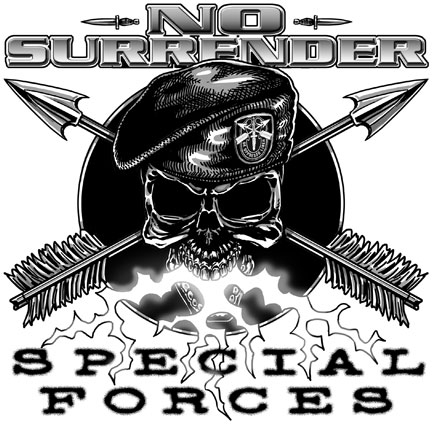
SOCOM refused to comment on the nature of its missions or the benefits of operating in so many nations. The command would not even name a single country where U.S. special operations forces deployed in the last three years. A glance at just some of the operations, exercises, and activities that have come to light, however, paints a picture of a globetrotting command in constant churn with alliances in every corner of the planet.
In January and February, for example, members of the 7th Special Forces Group and the 160th Special Operations Aviation Regiment conducted a month-long Joint Combined Exchange Training (JCET) with forces from Trinidad and Tobago, while troops from the 353rd Special Operations Group joined members of the Royal Thai Air Force for Exercise Teak Torch in Udon Thani, Thailand. In February and March, Green Berets from the 20th Special Forces Group trained with elite troops in the Dominican Republic as part of a JCET.
In March, members of Marine Special Operations Command and Naval Special Warfare Unit 1 took part in maneuvers aboard the guided-missile cruiser USSCowpens as part of Multi-Sail 2014, an annual exercise designed to support “security and stability in the Indo-Asia-Pacific region.” That same month, elite soldiers, sailors, airmen, and marines took part in a training exercise code-named Fused Response with members of the Belizean military. “Exercises like this build rapport and bonds between U.S. forces and Belize,” said Air Force Lieutenant Colonel Heber Toro of Special Operations Command South afterward.
In April, soldiers from the 7th Special Forces Group joined with Honduran airborne troops for jump training — parachuting over that country’s Soto Cano Air Base. Soldiers from that same unit, serving with the Afghanistan task force, also carried out shadowy ops in the southern part of that country in the spring of 2014. In June, members of the 19th Special Forces Group carried out a JCET in Albania, while operators from Delta Force took part in the mission that secured the release of Army Sergeant Bowe Bergdahl in Afghanistan. That same month, Delta Force commandos helped kidnap Ahmed Abu Khattala, a suspected “ringleader” in the 2012 terrorist attacks in Benghazi, Libya, that killed four Americans, while Green Berets deployed to Iraq as advisors in the fight against the Islamic State.
In June and July, 26 members of the 522nd Special Operations Squadron carried out a 28,000-mile, four-week, five-continent mission which took them to Sri Lanka, Tanzania, and Japan, among other nations, to escort three “single-engine [Air Force Special Operations Command] aircraft to a destination in the Pacific Area of Responsibility.” In July, U.S. Special Operations forces traveled to Tolemaida, Colombia, to compete against elite troops from 16 other nations — in events like sniper stalking, shooting, and an obstacle course race — at the annual Fuerzas Comando competition.
In August, soldiers from the 20th Special Forces Group conducted a JCET with elite units from Suriname. “We’ve made a lot of progress together in a month. If we ever have to operate together in the future, we know we’ve made partners and friends we can depend upon,” said a senior noncommissioned officer from that unit. In Iraq that month, Green Berets conducted a reconnaissance mission on Mount Sinjar as part an effort to protect ethnic Yazidis from Islamic State militants, while Delta Force commandos raided an oil refinery in northern Syria in a bid to save American journalist James Foley and other hostages held by the same group. That mission was a bust and Foley was brutally executed shortly thereafter.
In September, about 1,200 U.S. special operators and support personnel joined with elite troops from the Netherlands, the Czech Republic, Finland, Great Britain, Lithuania, Norway, Poland, Sweden, and Slovenia for Jackal Stone, a training exercise that focused on everything from close quarters combat and sniper tactics to small boat operations and hostage rescue missions. In September and October, Rangers from the 3rd Battalion, 75th Ranger Regiment deployed to South Korea to practice small unit tactics like clearing trenches and knocking out bunkers. During October, Air Force air commandos also conducted simulated hostage rescue missions at the Stanford Training Area near Thetford, England. Meanwhile, in international waters south of Cyprus, Navy SEALs commandeered that tanker full of oil loaded at a rebel-held port in Libya. In November, U.S. commandos conducted a raid in Yemen that freed eight foreign hostages. The next month, SEALs carried out the blood-soaked mission that left two hostages, including Luke Somers, and eight civilians dead. And these, of course, are only some of the missions that managed to make it into the news or in some other way onto the record.
Everywhere They Want to Be
To America’s black ops chiefs, the globe is as unstable as it is interconnected. “I guarantee you what happens in Latin America affects what happens in West Africa, which affects what happens in Southern Europe, which affects what happens in Southwest Asia,” McRaven told last year’s Geolnt, an annual gathering of surveillance-industry executives and military personnel. Their solution to interlocked instability? More missions in more nations — in more than three-quarters of the world’s countries, in fact — during McRaven’s tenure. And the stage appears set for yet more of the same in the years ahead. “We want to be everywhere,” said Votel at Geolnt. His forces are already well on their way in 2015.
“Our nation has very high expectations of SOF,” he told special operators in England last fall. “They look to us to do the very hard missions in very difficult conditions.” The nature and whereabouts of most of those “hard missions,” however, remain unknown to Americans. And Votel apparently isn’t interested in shedding light on them. “Sorry, but no,” was SOCOM’s response toTomDispatch’s request for an interview with the special ops chief about current and future operations. In fact, the command refused to make any personnel available for a discussion of what it’s doing in America’s name and with taxpayer dollars. It’s not hard to guess why.

Votel now sits atop one of the major success stories of a post-9/11 military that has been mired in winless wars, intervention blowback, rampant criminal activity, repeated leaks of embarrassing secrets, and all manner of shocking scandals. Through a deft combination of bravado and secrecy, well-placed leaks, adroit marketing and public relations efforts, the skillful cultivation of a superman mystique (with a dollop of tortured fragility on the side), and one extremely popular, high-profile, targeted killing, Special Operations forces have become the darlings of American popular culture, while the command has been a consistent winner in Washington’s bare-knuckled budget battles.
This is particularly striking given what’s actually occurred in the field: in Africa, the arming and outfitting of militants and the training of a coup leader; in Iraq, America’s most elite forces were implicated in torture, the destruction of homes, and the killing and wounding of innocents; in Afghanistan, it was a similar story, with repeated reports of civilian deaths; while in Yemen, Pakistan, and Somalia it’s been more of the same. And this only scratches the surface of special ops miscues.
In 2001, before U.S. black ops forces began their massive, multi-front clandestine war against terrorism, there were 33,000 members of Special Operations Command and about 1,800 members of the elite of the elite, the Joint Special Operations Command. There were then also 23 terrorist groups — from Hamas to the Real Irish Republican Army — as recognized by the State Department, including al-Qaeda, whose membership was estimated at anywhere from 200 to 1,000. That group was primarily based in Afghanistan and Pakistan, although small cells had operated in numerous countries including Germany and the United States.
After more than a decade of secret wars, massive surveillance, untold numbers of night raids, detentions, and assassinations, not to mention billions upon billions of dollars spent, the results speak for themselves. SOCOM has more than doubled in size and the secretive JSOC may be almost as large as SOCOM was in 2001. Since September of that year, 36 new terror groups have sprung up, including multiple al-Qaeda franchises, offshoots, and allies. Today, these groups still operate in Afghanistan and Pakistan — there are now 11 recognized al-Qaeda affiliates in the latter nation, five in the former — as well as in Mali and Tunisia, Libya and Morocco, Nigeria and Somalia, Lebanon and Yemen, among other countries. One offshoot was born of the American invasion of Iraq, was nurtured in a U.S. prison camp, and, now known as the Islamic State, controls a wide swath of that country and neighboring Syria, a proto-caliphate in the heart of the Middle East that was only the stuff of jihadi dreams back in 2001. That group, alone, has an estimated strength of around 30,000 and managed to take over a huge swath of territory, including Iraq’s second largest city, despite being relentlessly targeted in its infancy by JSOC.
“We need to continue to synchronize the deployment of SOF throughout the globe,” says Votel. “We all need to be synched up, coordinated, and prepared throughout the command.” Left out of sync are the American people who have consistently been kept in the dark about what America’s special operators are doing and where they’re doing it, not to mention the checkered results of, and blowback from, what they’ve done. But if history is any guide, the black ops blackout will help ensure that this continues to be a “golden age” for U.S. Special Operations Command.
Reprinted with permission from TomDispatch.com.





 del.icio.us
del.icio.us
 Digg
Digg